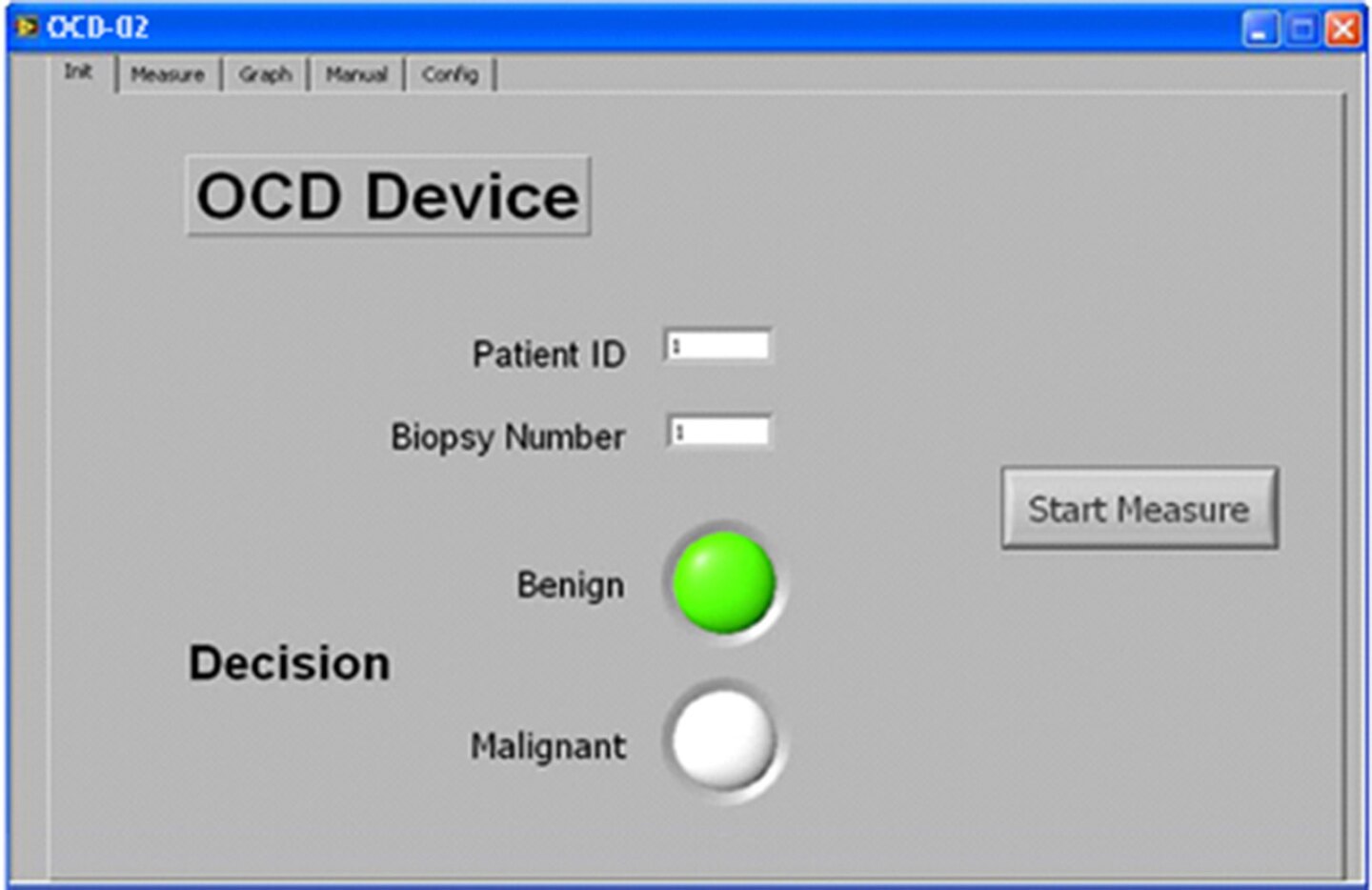European research organization Fraunhofer is set to present a prototype device for quickly diagnosing prostate cancer at the COMPAMED trade fair in Düsseldorf next week. Its creators claim that it can reliably determine whether changed tissue in the prostate is benign or malignant within just a minute-and-a-half, thanks to an on-board visual analysis of a sample gathered via biopsy.
A doctor need only place the removed tissue sample on a base plate, slide it into the machine, press a button, and wait – there's no lengthy or laborious preparation or painstaking examination under the microscope with the eye of an expert. Patients could then be briefed on their options for next steps right away, rather than days later.
This isn't the only new device for detecting prostate cancer, and indeed other emerging technologies may be far less invasive. Finnish researchers developed an electronic nose earlier this year that distinguished between prostate cancer and benign prostatic hyperplasia with a high degree of accuracy from sniffing patients' urine samples, while a 2012 study resulted in a ultra-sensitive biosensor that could detect very small concentrations of an antigen associated with prostate cancer. Similar research in 2011 detected prostate cancer with high accuracy by examining blood samples.
The Fraunhofer device emits a laser pulse onto the tissue sample, exciting molecules called fluorophores (fluorescent chemical compounds found throughout the human body that light up for a short time when stimulated by certain wavelengths). The resultant fluorescence radiation decreases at a different rate for benign versus malignant tissue: if the rate exceeds a particular threshold value, cancer cells are present. The device then offers a green light if the patient is cancer free, or a red light if they are not.

The 54 x 60 x 43 centimeter (21 x 24 x 17 in) prototype device has been used in two clinical studies, with a third currently underway.
The researchers hope future versions of the device will be able to detect other forms of cancer, but they must first identify the threshold values for other tissue types and integrate those into the analysis software. They envision doctors of the future diagnosing a broad range of cancers in this way, using a drop-down menu in the device's software to select the appropriate tissue type.
Source: Fraunhofer





![The Ti EDC [everyday carry] Wrench is currently on Kickstarter](https://assets.newatlas.com/dims4/default/0ba225b/2147483647/strip/true/crop/4240x2827+0+3/resize/720x480!/quality/90/?url=http%3A%2F%2Fnewatlas-brightspot.s3.amazonaws.com%2F59%2Fb2%2F6a6fdd0348a8bfdad88bbcefec53%2Fdsc03572.jpeg)